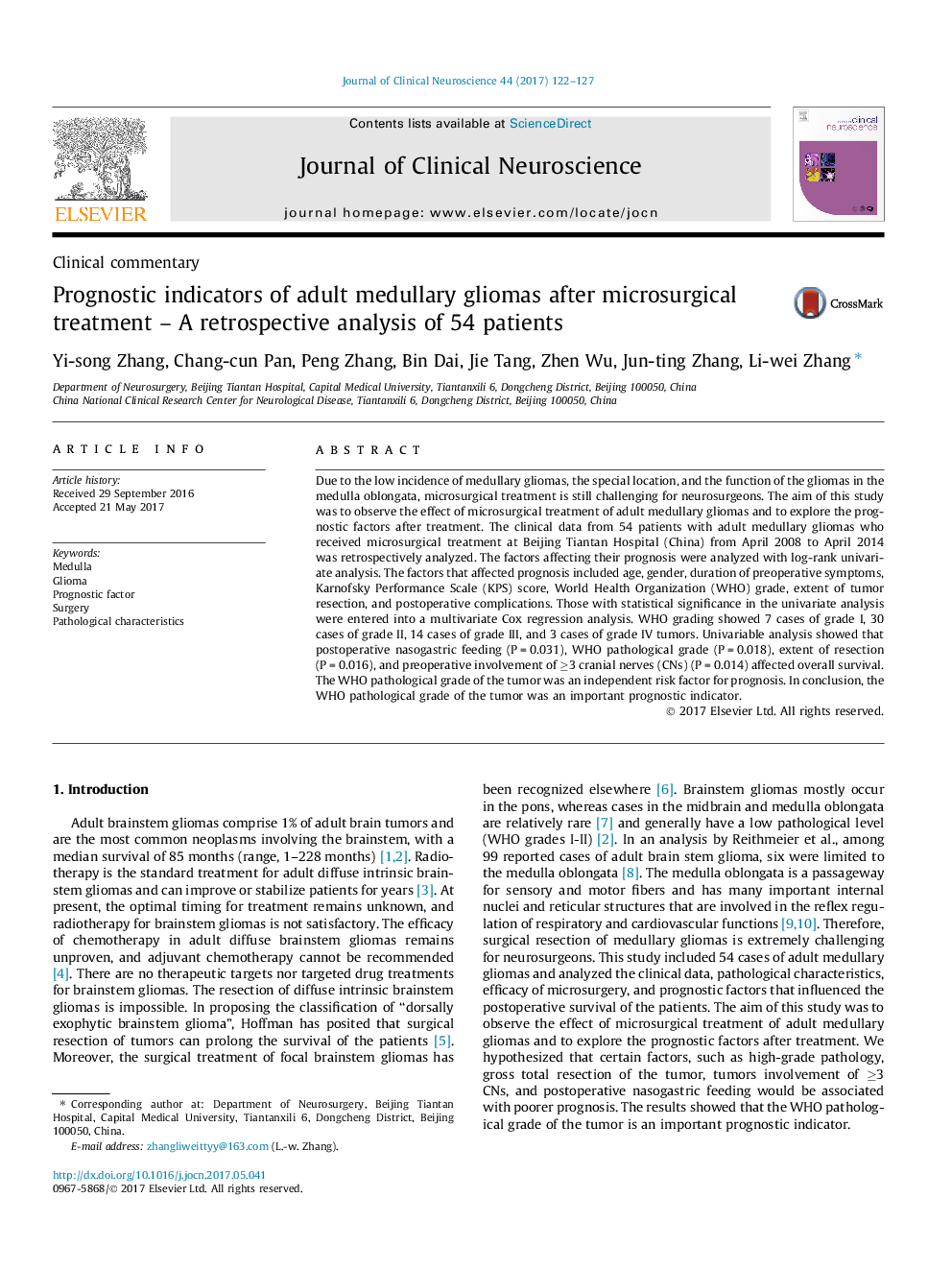| کد مقاله | کد نشریه | سال انتشار | مقاله انگلیسی | نسخه تمام متن |
|---|---|---|---|---|
| 5629517 | 1580272 | 2017 | 6 صفحه PDF | دانلود رایگان |
- Pathological grade was an independent risk factor for the prognosis of patients with medullary gliomas.
- STR rather than GTR or PR appeared to improve OS and therefore should be recommended.
- Preoperative involvement of â¥3 CNs, postoperative nasogastric feeding, and extent of resection affected OS.
Due to the low incidence of medullary gliomas, the special location, and the function of the gliomas in the medulla oblongata, microsurgical treatment is still challenging for neurosurgeons. The aim of this study was to observe the effect of microsurgical treatment of adult medullary gliomas and to explore the prognostic factors after treatment. The clinical data from 54 patients with adult medullary gliomas who received microsurgical treatment at Beijing Tiantan Hospital (China) from April 2008 to April 2014 was retrospectively analyzed. The factors affecting their prognosis were analyzed with log-rank univariate analysis. The factors that affected prognosis included age, gender, duration of preoperative symptoms, Karnofsky Performance Scale (KPS) score, World Health Organization (WHO) grade, extent of tumor resection, and postoperative complications. Those with statistical significance in the univariate analysis were entered into a multivariate Cox regression analysis. WHO grading showed 7 cases of grade I, 30 cases of grade II, 14 cases of grade III, and 3 cases of grade IV tumors. Univariable analysis showed that postoperative nasogastric feeding (P = 0.031), WHO pathological grade (P = 0.018), extent of resection (P = 0.016), and preoperative involvement of â¥3 cranial nerves (CNs) (P = 0.014) affected overall survival. The WHO pathological grade of the tumor was an independent risk factor for prognosis. In conclusion, the WHO pathological grade of the tumor was an important prognostic indicator.
Journal: Journal of Clinical Neuroscience - Volume 44, October 2017, Pages 122-127
